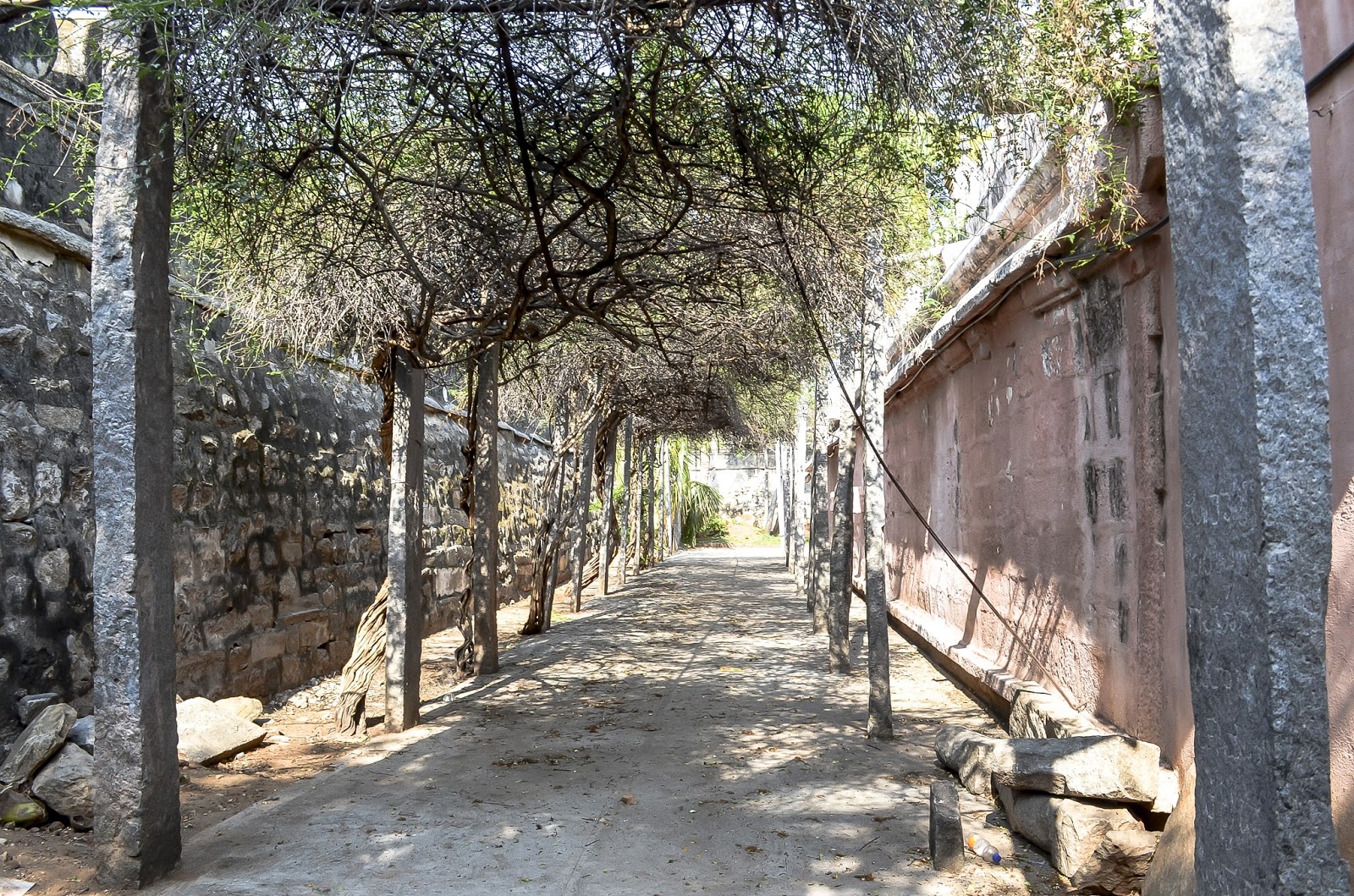Lord Narasimhaswamy manifests here in the ugra swaroopa (fierceful
and strong), with three eyes, eight hands, holding the asura king
Hiranyakashayap on his lap and tearing him apart with the sharp nails. Two hands
are tearing Hiranyakashayap apart, who lies on the lap of Lord
Narasimha; two hands are holding the intestines
of Hiranyakashayap which appear like a garland on the transcendental
body of the Lord; other four hands are holding the weapons of the Lord –
Sudarshana (chakra / disc), Paanchajanya (shankha / conch-shell), Pasha &
Ankusha. On the right side of the Lord is Prahlada and on the left
side is Garuda, standing humbly and praying to the Lord. His third
eye got manifested while killing the demon Hiranyakashayap.
The temple was initially built in the Hoysala style, with later additions
in the Dravidian style, including a gopura. It was later developed and
renovated during the reign of Vijayanagar kings. The outer prakara wall is built
like a fort wall. In the inner prakara of the temple there are small
temples of Sri Srinivasa, Yashoda and Krishna, the consorts of Lord
Narasimha – Srimati Sowmya Nayaki and Srimati Narasimha Nayaki, Sri Rama, Sita, Lakshmana and Hanuman. At the altar of Sri Rama, Hanuman is
standing on the left side of Lord Rama. It is one of the very few temples where
Hanuman stands on the left side of the Lord.
During the Dwapara-yuga, Maddur was known as Arjunapuri, named after
Arjuna – one of the Pandavas. Years later, when the sage Kadamba Rishi
worshiped Lord Narasimha here, the town came to be called as Kadamba Kshetra.
Between the 16th and the 18th centuries when this region was being governed by
the Palegaras, gunpowder and explosives used for warfare were manufactured and
stored here. It was during this period the town came to be known as Maddu-uru, maddu meaning gunpowder in Kannada. There is also
another version which says the town got its name from its presiding deity,
Madduramma, who has a small temple inside the town.







Comments
Post a Comment